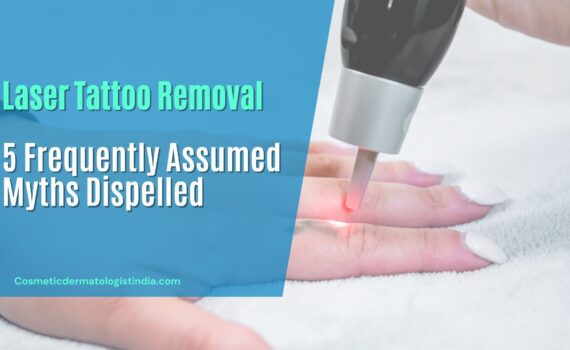
Choosing the Right Clinic: What to Look for in a Laser Tattoo Removal Specialist
Choosing the Right Clinic: What to Look for in a Tattoo Removal Specialist
More than 200 million people around the world have at least one tattoo on their body. Tattoos are especially very popular among the millennials . but not all of them are happy with their tattoos. The history of tattoo dates back to more than 6000 years ago and in the ancient times it was used as a mark of power and identification. As the generations have passed tattoos have become a fashion, a show of personality and intelligence and sometimes a sign of rebel too. about 31% of people who have a tattoo feel that tattoo adds to their sex appeal. Another interesting fact about tattoo is that more women regret getting their tattoos than men. The two most important things that people think about getting a tattoo is its personal means and the tattoo cost. Among all of the people with tattoos, about 25% regret getting the tattoo.
If you are also among those people who no longer wish to keep the tattoo or want a new one in the place of the old one then the good news is that the laser treatment for tattoo removal can not only significantly reduce the appearance of the tattoo with minimal side effects but also give you a smoother skin.
Why is laser tattoo removal so popular?
The use of Q-switched lasers has been in practice since the 1990s. Multiple sessions of the laser treatments are needed to have the tattoo completely. Q switched lasers emit short bursts of high energy that breakup the ink molecules in the skin into small particles. These particles are flushed out of the body’s immune system naturally in a few weeks. Each additional treatment of the tattoo will see it fading more till you can no longer see it. Tattoo removal is typically done in multiple sessions spaced several weeks apart to allow the skin to heal and the body to clear away the fragmented ink particles. The number of sessions required depends on factors like the size, colour, depth, and age of the tattoo. Since the energy burst is in short pulses, the heat does not damage the skin surrounding the tattoo and hence the skin damage is next to minimal.
The latest innovation added to laser tattoo removal is the picosecond lasers, which give off energy that is hits the skin only for billionths of the second. This is more effective and reduces the number of sessions needed for tattoo removal. For different colours in the tattoo different types of lasers is used. Some laser wavelengths have affinity to particular tattoo ink colours and low affinity to the normal skin and hence laser treatment for tattoo removal has minimal effect on the surrounding skin.
Lasers for different pigment colours
There are several types of Q-switched lasers used for tattoo removal, each targeting different colours of tattoo ink:
- Q-Switched Nd:YAG Laser: This laser is one of the most commonly used for tattoo removal. It emits light at two different wavelengths (1064 nm and 532 nm) to target different ink colours. The 1064 nm wavelength is effective for darker colours like black and blue, while the 532 nm wavelength is used for red, orange, and other lighter colours.
- Q-Switched Ruby Laser: The Ruby laser emits light at a wavelength of 694 nm, primarily targeting blue and green ink colours. It’s less commonly used today compared to other Q-switched lasers due to its limited versatility with other colours.
- Q-Switched Alexandrite Laser: This laser emits light at a wavelength of 755 nm and is effective for targeting black, blue, and green tattoo pigments.
- Q-Switched Picosecond Lasers: These newer lasers deliver even shorter pulses of energy in picoseconds and are designed to break down tattoo ink into smaller particles, which can potentially lead to faster and more complete clearance of tattoos. They often work well on a broader range of ink colours and are used in cases where traditional Q-switched lasers might not be as effective.
Modern lasers are also effective in removing all kinds of tattoos such as cosmetic tattoos or permanent makeups done on eyebrows, eyelids and lips and traumatic tattoos. Laser can also be used to get rid of traumatic tattoos that are often caused because of automobile accidents.
How is laser tattoo removal done?
Laser treatments are done in the surgical clinics by the approved dermatologists or cosmetologists only. It is a relatively painless procedure but the technician will apply a numbing cream on the area that is to be treated.
- You will be given protectively eyewear to wear to shield the eyes from laser
- The laser for tattoo removal device is a small hand held device that the practitioner will direct on the tattoo. In case of cosmetic tattoos there is risk of colour shifting and hence it is necessary to do the patch test first. In such cases the cosmetic surgeon will first use an Erbium laser at it vaporises the thin layer of skin which has tattoo in it.
- The tattoo ink will absorb the light and cause it to break down in the smaller segments. It feels like touching a hot iron but only for a fraction of a second.
- Once the session is over, the surgeon will apply an ice pack or soothing cream to the treated area. this will help reduce the swelling and discomfort.
- You can go home after the session but keep the area clean and avoid sun exposure
- In the following weeks, you will see the ink fade a bit as the body removes the defragmented ink. Redness, swelling, blistering, scabbing and crusting on the tattoo are a part of the normal process.
- Your surgeon will tell you when to come in for the next session depending on many different factors.
What factors influence the number of sessions needed for laser treatment for tattoo removal
Generally, it is difficult to get the tattoo to fade completely in just one session. The more the colours and delicate designs the more tough it is to get the tattoo out. Single colour and amateur tattoos are relatively easy to remove. Usually, 10-20 treatments are needed for professional coloured tattoos. Therefore, you should factor that in when going for the treatment. Factors that determine how many sessions of laser tattoo removal will be needed for your tattoo also affect the tattoo removal cost in India and these include
- The skin type: Tattoo removal is easier for pale skin as the laser light can easily distinguish the contrast of the colour. The darker the skin type the more difficult it is to compare the target for the laser. For darker skin the aesthetician will use a lower laser energy setting and hence more sessions will be needed.
- Placement of the tattoo: The tattoo ink drainage system includes the body’s immune system and the lymphatic drainage system along with the blood supply. Since this is different for various body parts. This network is strongest in the neck, head and trunk area and less in the ends of legs and hands. Therefore, the tattoos in high blood supply area are more quickly faded than others.
- Colours used in the tattoo: Black is easiest to remove and the colours like green, yellow or tattoos with combination of colours will take the longest and hardest to remove.
- The amount of ink used: The amount of ink deposits will determine the number of sessions needed for tattoo removal. Tattoos with just outlines or minimal inks will be easier to remove than the solid tattoos.
- Scarring: Many people get tattoos to cover any existing scarring on the body. or often the tattoos can leave scars on the body or some changes in tissues that can make it difficult to remove with laser. Also tattoo removal procedures don’t remove the preexisting scars, they only remove the tattoo ink.
- Laying of tattoos: if you have had one tattoo over another then the number of treatment sessions will increase because of the added ink.
The duration of removal of tattoo varies for every person. In some people it can take up to a year to get the full removal as minimum of 4-6 weeks are needed before the next sessions and even more for darker complexions. Doing laser tattoo removal treatments too close to each other can damage the skin as the body is not recovered fully.
Recovery from laser tattoo removal treatment
Immediately after the laser treatment the tattoo might appear a little raised and white in colour and the skin around it can become red. Some even notice some bleeding at the side. The doctor will give you some antibiotic cream to apply on the area. keep the area try and don’t try to touch or scratch the tattoo as it heals. It will take about 1-3 weeks to heal completely.
Before considering laser tattoo removal, schedule a consultation with a qualified dermatologist or medical professional who specializes in the procedure. They will evaluate your skin, your tattoo, and your medical history to determine if you are a suitable candidate for the treatment. They can also provide you with personalized recommendations based on your individual circumstances.
Who should not get at a laser tattoo removal?
Laser tattoo removal is generally a safe procedure, but there are certain individuals who might not be suitable candidates for the treatment or who should approach it with caution
- Pregnant or Nursing Individuals: Individuals with Certain Medical Conditions, such as immune system disorders, history of keloid or hypertrophic scarring, or certain skin diseases, might not be suitable candidates for laser tattoo removal
- Individuals with Certain Skin Types: Laser tattoo removal works best on individuals with lighter skin tones and dark tattoos. People with darker skin tones might have a higher risk of pigment changes (hyperpigmentation or hypopigmentation) after treatment, and the effectiveness of the laser can be reduced on tattoos with white, light blue, and certain other lighter colours.
- Recent Sun Exposure or Tanning: Tanned or sunburned skin is more sensitive and prone to adverse reactions after laser treatments. It’s recommended to avoid sun exposure and tanning beds before and after each treatment session.
- Certain Medications and Topical Products: Some medications or topical products, like certain antibiotics or retinoids, can increase the risk of adverse reactions to laser treatments.
- Individuals with Active Skin Infections or Lesions: If you have an active skin infection or open sores in the tattooed area, laser treatment should be postponed until the infection has cleared up.
- Individuals with History of Allergic Reactions: If you have a history of allergic reactions to tattoo ink or other substances, you should inform your medical professional before undergoing laser tattoo removal.
Tattoo removal cost in India
Tattoos are easy to remove and you just need a bit of patience to let the treatment work. Laser tattoo removal cost in India depends on the type of laser used, the skin type, the size of the tattoo, the colours used and how your skin responds to tattoo removal. Tattoo removal cost in India also varies with the surgeon’s expertise and experience. But since it is a cosmetic procedure, it is not often covered by insurance. Hence you should check with your doctor after the patient of the treatment before starting the treatment.







